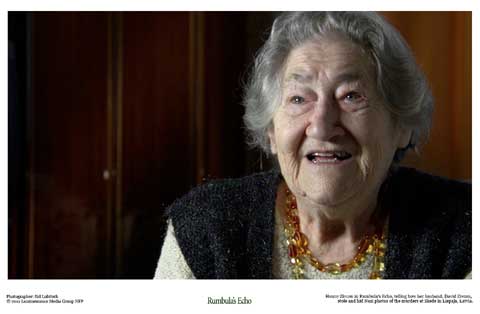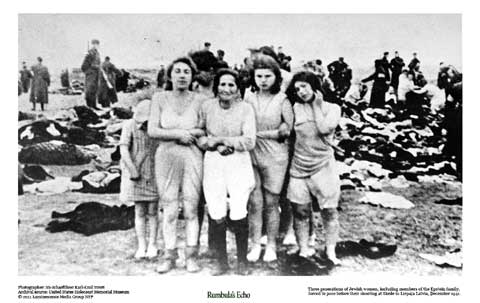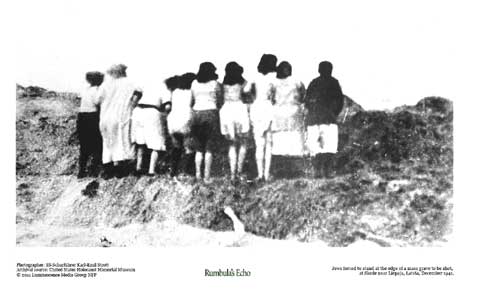
WIFE TELLS HOW HUSBAND STOLE NAZI PHOTOS OF DECEMBER 15-17, 1941 HOLOCAUST MURDERS IN NEW DOCUMENTARY FILM

Henny Zivcon
December 15-17, 1941, nearly 3,000 Jews were murdered at mass graves in the Skede dunes, near Liepaja, Latvia. An SS man took close-up photographs that showed victims before, during and after execution, giving a human dimension to the slaughter. The negatives and prints were destroyed, like so many others, or so the Nazis thought. Interviews filmed by a forthcoming documentary about the Holocaust in Latvia, Rumbula’s Echo, include Henny Zivcon’s personal story of how her husband, David, secretly found the negatives, made prints and then replaced the negatives to avoid detection. After the war, the Skede photographs found their way to the Nuremberg trials and are today seen in Holocaust museums worldwide.

Skede. Five Jewish women force to pose.
David Zivcon was an exceptionally skilled electrician working in the Liepaja German Security Police headquarters. In the documentary, his widow recounts how he discovered the negatives while making an electrical repair in a German officer’s quarters, stole them and had Jewish photo technician, Meir Stein, make prints. Zivcon concealed the prints in a tin, placing it behind a brick in a wall of the Security Police’s horse stables. According to Mrs. Zivcon, “No one saw, no one knew,” not even her, until war’s end. Revealing that he preserved the photos so that there would be evidence she said, “David wanted nothing more, only revenge…” for the murders of the Jews in his city.
Mrs. Zivcon tells how, the following year, gentiles Robert and Johanna Seduls hid the couple in a basement bunker for 19 months. Seduls constructed the new basement wall that created the secret room with “holy bricks” from the destroyed Liepaja synagogue. Had the Seduls not rescued David Zivcon, he may not have survived the Holocaust to retrieve the hidden photographs.

Jews forced to stand at the age of mass grave to be shot.
Skede, December 1941.
Rumbula’s Echo is the first documentary feature about the Holocaust and mass shootings throughout Latvia, which ended the lives of nearly all of its Jews. It is being produced both for theatrical release, and as a longer mini-series of three one hour programs for TV. The production is staffed by award-winning documentary and TV veterans, and five of the world’s most respected historians on the Holocaust in Latvia. The producer is the non-profit Luminescence Media Group NFP, led by Chicago broadcaster Mitchell Lieber. The film is funded by The Conference on Jewish Material Claims Against Germany and the Task Force for International Cooperation on Holocaust Education, Remembrance and Research, among others.
More information is at www.RumbulasEcho.org.
